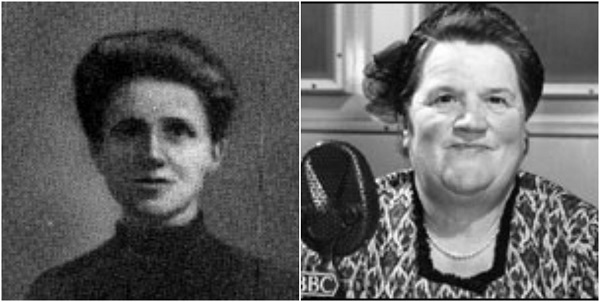Mary and Bessie were trades union and political forces to be reckoned with. We take a look at the common threads of their lives.
Who were they?
- Born in 1874, Mary ‘Ma’ Bamber was an active socialist, trade unionist, social worker and suffragist and became a Labour councillor in 1919.
- Bessie Braddock was born in 1899 and attended her first political meeting at three weeks old! She followed in Ma’s footsteps, becoming an active trade unionist and a prominent Labour MP.

They worked and campaigned together
- In 1911 both Mary and Bessie attended the ‘Bloody Sunday’ demonstration in the Liverpool general transport strike. Bessie was just 11.
- Leading up to the First World War, Mary became well known through her work as an organiser with the Warehouse Workers Union. Her focus was on empowering women, and encouraging low paid workers to organise and attend union meetings. Bessie started work there after the War.
- They supported the 1922 hunger marchers when they passed through Liverpool.
They worked tirelessly for Liverpool’s poorest
- From 1906–1907 Mary helped to make soup sold for a farthing a bowl as part of a collective helping Liverpool’s poorest. She visited the sick, collected for the unemployed and frequently spoke at outdoor meetings.
- Bessie became a councillor in 1930 and made slum clearance her priority, once famously taking a two-foot megaphone into the chamber to force action.
They had their eyes on elections
- Mary stood as a Labour councillor for Everton ward in 1919
- Bessie became a Labour MP for Liverpool Exchange in 1945.
They ignored stigma and championed the sensitive issues of the time
- As a Justice of the Peace, Mary promoted the dissemination of contraceptive advice as a mechanism to empower women.
- Bessie helped on the commission which led to the Mental Health Act 1959.
They were confident in verbal combat
- Sylvia Pankhurst described Mary as the “finest, fighting platform speaker in the country”. In a city that was dominated by sectarianism, Mary refused any religious identification and was a regular heckler at Catholic and Protestant rallies.
- Bessie’s combative style sometimes caused controversy and she didn’t shy away from controversial issues, she was even briefly suspended from Parliament in 1952 after defying the Speaker.
They worked to the end
- In 1938, Mary died in Liverpool, having spoken at her last meeting just two weeks before, at the age of 64. Bessie passed away in 1970, having retired from political life earlier that same year.
They continue to watch over Liverpool
- Both women have statues honouring their services. Mary’s at the Museum of Liverpool and Bessie’s on the concourse of Liverpool Lime Street station.